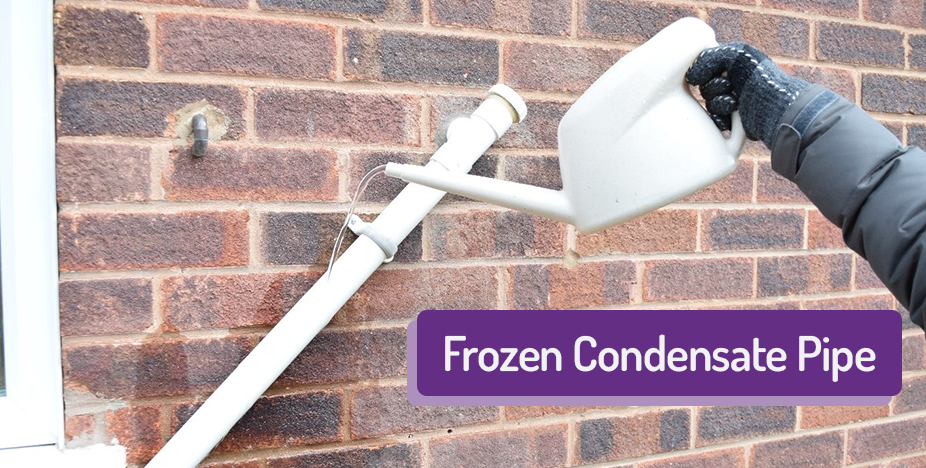If your boiler has stopped working in Frozen temperatures, the likely hood of this could be because you have a frozen condensate pipe coming of your boiler. This can be a major inconvenience considering the temperatures outside are likely to be freezing. Condensate pipes, usually Black or white plastic pipes coming off your boiler are responsible for carrying away the excess water produced by your heating system, and when they freeze, it can prevent the boiler functioning, such as horrendous noises or error codes on your boiler. In this blog, we’ll cover the causes of a frozen condensate pipes, how these can be prevented, and what to do if you suspect a frozen condensate pipe.
The Causes of a Frozen Condensate Pipe.
Condensate pipes are always likely to freeze when the temperature outside drops to freezing and there is little or no insulation, in recent years many manufacturers have upsized the requirements for gas engineers to install a bigger diameter pipe when they are outside. Frozen Condensate pipes are more common in older boilers or homes that may not have been built or installed with modern insulation standards in mind.
Other factors that contribute to frozen condensate pipes could be:
• Clogged pipes: If your condensate pipe is clogged with heat exchanger debris and hasn’t regularly been serviced correctly, it can then pile up inside the pipe and reduce the flow of water thus increasing the chances of the pipe freezing.
• Dripping pipes: If your condensing pipe is dripping, this can then cause the surrounding air to become more humid, furthermore increasing the chances of the pipe freezing.
Preventing a frozen Condensate Pipe
There are several steps you can take to avoid your condensate pipe from freezing:
• Most importantly Insulating the pipe correctly: Adding good quality insulation to your condensate pipe can help to keep it warm and prevent it from freezing during colder spells.
• Trying to keep the area around the condensate warm, if installed internally in garage or out house, ensure any drafts are sealed.
• Keeping the pipe clear: Making sure your condensate trap is regularly cleaned during routine maintenance can ensure the pipe is clear of any debris or algae that could have clogged it and reduce the flow of water.
• Fixing any leaks or drips: If your condensate pipe is leaking, it’s recommended to fix as soon as possible. A dripping pipe causes excess humidity in the air, which furthermore increase the chances of the pipe freezing.
A permanent solution to preventing frozen condensate pipes is by having a gas safe registered engineer install a trace heater around your condensate pipe that triggers to come on when temperatures outside are below freezing, please visit Any Gas to enquire about a trace heater specifically designed to prevent frozen condensate pipes.

What to Do if You suspect a Condensate Pipe is Frozen
Frozen Condensate pipe? There are a few things you can try to thaw it out…
• Use of hot water: Pouring hot not boiling water over the frozen section of the pipe to help melt the ice is the most common and preferred method. Be careful not to use water that is too hot, as it could cause the pipe to become too hot, melting or disforming the shape. The use of hot water may need to be repeated several times to dethaw the ice fully.
• Use of a heater/ hair dryer: Consider use a hair dryer or a electric heater to thaw out the frozen section of the pipe. Make sure you do not hold the dryer in one place for too long, as it can damage/ melt the pipe.
If none of the methods above have worked, or if you are unable to locate the condensate pipe or the frozen section of the pipe, it’s best to call a professional engineer to help fix the issue at hand. Book your engineer online at https://anygasservice.co.uk/ or alternatively call 03333442216.

